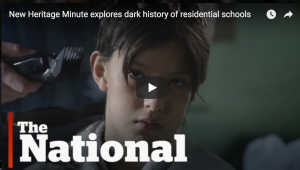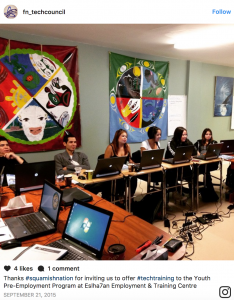Indigenous Language Revitalization – Encouragement, Guidance and Lessons Learned
http://jan.ucc.nau.edu/~jar/ILR/ILRbook.pdf
This resource is an extensive collection of academic articles focused on Indigenous Languages and revitalization efforts. The articles cover a wide range of topics, looking at everything from linguistics, to specific community efforts, and examples of technology being used effectively. One further positive with this collection of articles is that they focus on a number of different languages and communities and are not tied in to one specific geographic region. The various articles highlight some of the excellent work being done to revitalize many Indigenous languages and shows various possible steps that communities can take to ensure that their ancestral languages do not go extinct.
The Silent Genocide: Aboriginal Language Loss FAQ
http://www.terry.ubc.ca/2013/10/16/the-silent-genocide-aboriginal-language-loss-faq/
This article goes into great lengths to highlight exactly what language extinction means for a culture and the wider communities. The writer highlights the causes of language loss as well as showing how prevalent of an issue it actually is within Canada and British Columbia. It shows how the problem can be traced to a number of different causes, including residential schools, government policies and the marginalization of Indigenous communities by mainstream society. In addition, the writer also makes strong arguments for possible solutions to the issue, including creating legal protection for Indigenous rights and cultures, and providing better funding to support Indigenous language revitalization efforts.
The fight to revitalize Canada’s indigenous languages
Though this article is a few years old, it highlights different methods being used to help revitalize Indigenous languages in Canada. The main focus is on the Yawenda project, which had the goal of helping to bring back the Wendat language by offering language courses, teacher training, and instructional material for a small group of students wanting to learn their ancestral tongue. Similar to other articles written about the topic in Canada, this one does highlight how language extinction is especially concerning in British Columbia where there is a small percentage of fluent speakers and most are over 65. The article also argues that in order to help revitalize the various languages, the focus should be on funding community-based projects that connect different generations of people, and on improving access to early-childhood immersion programs. The use of technology is also discussed as a possible positive option as it can help to bridge the geographic distances that separate many communities.
First Peoples’ Cultural Council
This resource is a hub for a variety of other resources related to Indigenous People’s culture, some of which have been referenced in previous weblogs. The First Peoples’ Cultural Council aims to support Indigenous communities in British Columbia that are attempting to preserve and revitalize their languages. The organization works to fund different programs, such as the Language Nest, FirstVoices and the BC Language Initiative. In addition, the organization is an advocate for immersion-education programs. Beyond language, FPCC also has divisions for Arts and Culture and aim to provide programs and funding related to both those areas.
Say It First
Say It First is an organization in Canada that is aiming to revitalize Indigenous Languages through connecting with communities and utilizing technology. The organization focuses on developing resources that will be used by children and families that want to try and reclaim their ancestral languages. The resources that they develop are designed to be used in school settings to help children work towards becoming fluent in their language. As the main target for the resources is younger children, the organization has created a variety of children’s books and YouTube shows that help to teach children their desired language. One of the excellent aspects of the books is that they combine the Indigenous Language, a phonetic break-down and the English translation of the words to help children learn. Here is an example of one of their children’s books.

